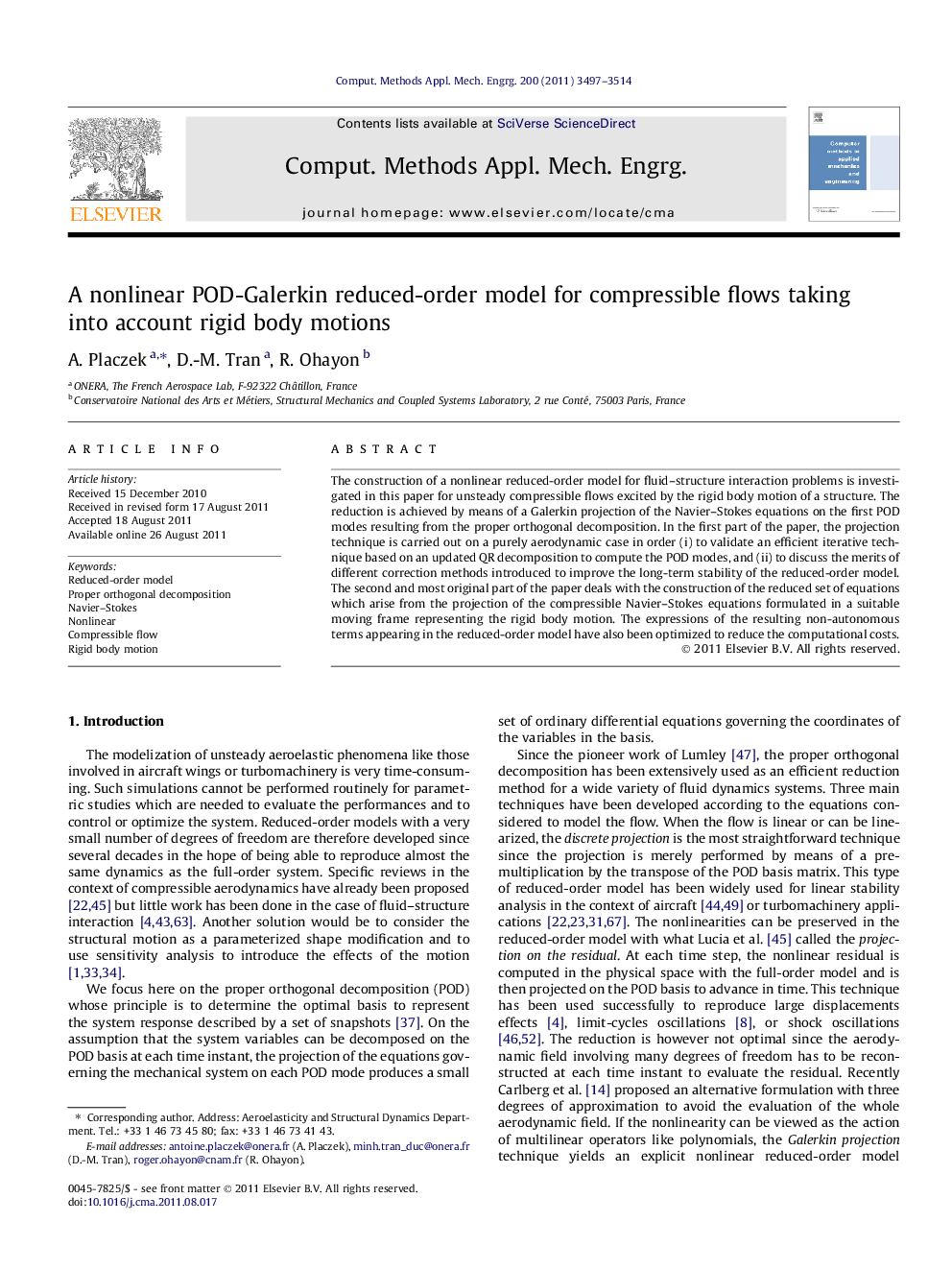| Article ID | Journal | Published Year | Pages | File Type |
|---|---|---|---|---|
| 498450 | Computer Methods in Applied Mechanics and Engineering | 2011 | 18 Pages |
The construction of a nonlinear reduced-order model for fluid–structure interaction problems is investigated in this paper for unsteady compressible flows excited by the rigid body motion of a structure. The reduction is achieved by means of a Galerkin projection of the Navier–Stokes equations on the first POD modes resulting from the proper orthogonal decomposition. In the first part of the paper, the projection technique is carried out on a purely aerodynamic case in order (i) to validate an efficient iterative technique based on an updated QR decomposition to compute the POD modes, and (ii) to discuss the merits of different correction methods introduced to improve the long-term stability of the reduced-order model. The second and most original part of the paper deals with the construction of the reduced set of equations which arise from the projection of the compressible Navier–Stokes equations formulated in a suitable moving frame representing the rigid body motion. The expressions of the resulting non-autonomous terms appearing in the reduced-order model have also been optimized to reduce the computational costs.
► A POD-Galerkin reduced-order model is developed for viscous compressible flows. ► Rigid body motions are taken into account with an adequate ALE formulation. ► Modified primitive variables are used to keep a quadratic form of the equations. ► Stabilization of the reduced-order model is necessary for an accurate solution. ► Identification with Tikhonov regularization is an efficient way of stabilization.
